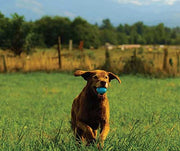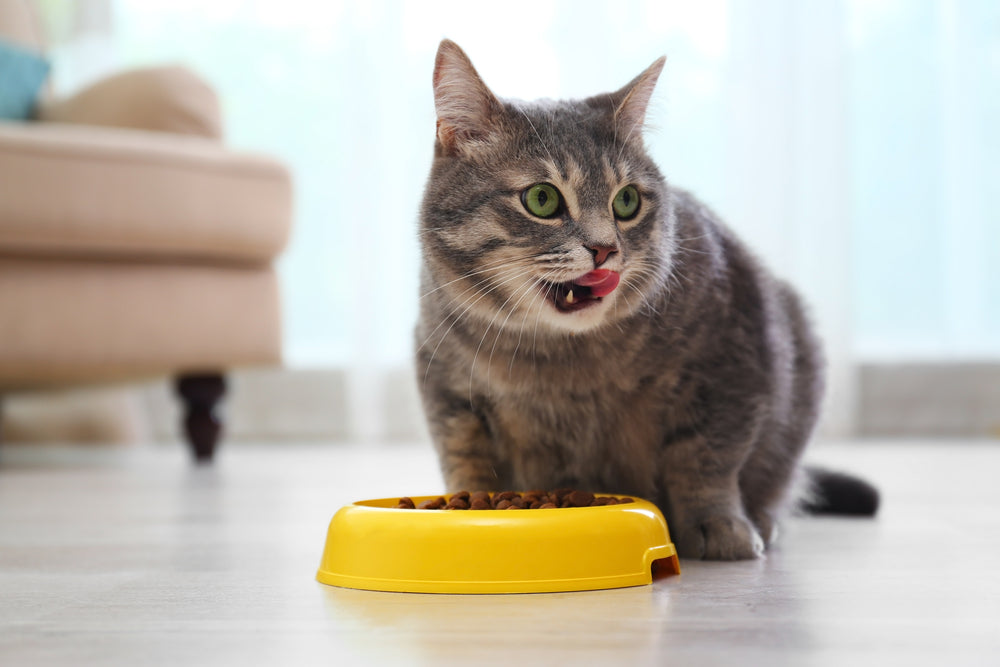Puppy Crate Training Tips

Despite what you might think, crates are not puppy jails. Rather, a crate is an important tool for giving your dog a sense of security and a safe place to sleep at night. Giving your puppy its own dedicated space inside your home gives your puppy a place to retreat to when feeling nervous, anxious, stressed, tired, or just to simply relax. Dogs are natural denning creatures and prefer a den-like space to retreat to, to rest. When you crate train your puppy, you'll know that your puppy is safe, yet comfortable while you're away from home. In this post, we'll provide some basic tips on what to keep in mind as you crate train your puppy.
Crate Size
While a bigger crate might seem like a better idea, a crate that's too large for your puppy's breed can diminish her sense of safety. Too large of a crate will also give your puppy a place inside to use the restroom. Be sure that your kennel or crate is only big enough for your puppy to walk in comfortably, turn around, and have just enough room to lay down. Some wire crates come with dividers that you can use to tailor the amount of space for your puppy.
Crate Types

There are three types of crates – wire, plastic, and soft-sided. A wire crate will be the best choice for most puppies. However, plastic crates offer more of a den-like environment and will make your puppy feel safer and more secure. Plastic crates are also a safer option. Soft-sided, foldable crates are ideal for pet owners who travel often with their puppies. Their lightweight designs make them very easy to transport.
Where to Put the Crate
There are numerous options for crate placement, and where you decide to place the crate will depend on several factors. Because your puppy is transitioning from sleeping with littermates to sleeping alone, she might find comfort in sleeping near you or members of your family. So, if you have the space, placing the crate in a bedroom could be a good first choice. Other, low-traffic areas might be good choices too, depending on the layout of your home.
Regardless of where you decide to place the crate, you should have your puppy's safety and comfort in mind. This means keeping the crate out of the way of heavy foot traffic, away from outlets and power cords, and away from toxic plants.
Remember, you can always move it as your and your puppy's preferences change.
What to Put in the Crate (and What Not To)

You'll want to make sure the crate is as comfortable as possible for your puppy, yet safe. One thing you can do to make the crate more comfortable is to add a kennel mat. Just be sure it doesn't have any zippers, plastic pieces, and other choking hazards that your puppy could chew off. Likewise, safe toys are a must if you don't want your puppy to get bored.
Some dog owners leave clothing with their scents in their dogs' crates to comfort their animals. However, you shouldn't do this if your puppy will chew up the clothing and risk an expensive visit to the vet. One option is to buy specially made bedding that you can stuff with old clothing so that your puppy can safely enjoy your scent.
It is recommended that you keep food and water out of the crate. Your puppy can drink too much water or spill it, creating a restroom mess or water mess for you to clean up. The crate should mean rest time, not feeding or drinking time.
Finally, collars off in the crate, especially wire ones. Collars can get caught on the crate, causing your puppy to get stuck or choke.
Getting Your Puppy Used to the Crate
First, don't leave your puppy in the crate for more than a few hours at a time. Remember, puppies cannot hold their bladder for a very long time. So, you'll need to be sure to plan ahead so that you can let your puppy out every few hours to use the restroom. Giving your puppy a treat or two when not having any accidents inside their crate will create positive reinforcement and will reinforce the crate as a positive space. It can take up to six months or longer to establish a good crate routine, so patience is very important.
Conclusion
Crate training is vital to your puppy's wellbeing. Crates are not only safe for dogs, but they also give them their own dedicated space to retreat to. Following these tips will better ensure that your puppy adjusts to its new home and live a happy and healthy life.
Previous article

Related posts
View all-

Wet Vs. Dry Cat Food: Which is Better?
As a caring cat owner, you always want the best for your furry friend, especially with their food. You typically have two choices: dry cat food in a bag or canned wet food. Whether you've just brought home a new kitty or are looking to transition to a new food, the decision process can be overwhelming, and understanding the impact of each on your cat's diet is essential. Read Article -

Celebrate National Pet Week: Fun Ideas to Celebrate with Your Pet
National Pet Week is right around the corner, so it's time to plan how you're going to celebrate! While we're sure you celebrate your pet all day every day... Read Article -

5 Simple Tips to Make Sure Your Cat Drinks Enough Water
Ensuring your cat stays hydrated is important, but it can be challenging since many cats don't drink enough water. Dehydration can lead to kidney disease and other health issues. Fortunately, you can encourage your cat to drink more with a few simple changes. Read Article




